Media | Articles
15 GTO facts you might not know about America’s original muscle car
In the early spring of 1963, during a “what if” session at GM’s Milford, Michigan, Proving Grounds, a small team of Pontiac engineers led by John Z. DeLorean realized the 389-cubic-inch V-8 from the full-size Bonneville would fit easily in the new midsize Tempest. A week later, they were doing burnouts in the first prototype, and the car widely accepted as America’s first muscle car, the 1964 Pontiac GTO, was born. Though the marque is deceased, the model remains as popular as ever. Here’s a look back at the GTO’s many milestones during its initial 10-year production run.
01: Gas, tires, and oil
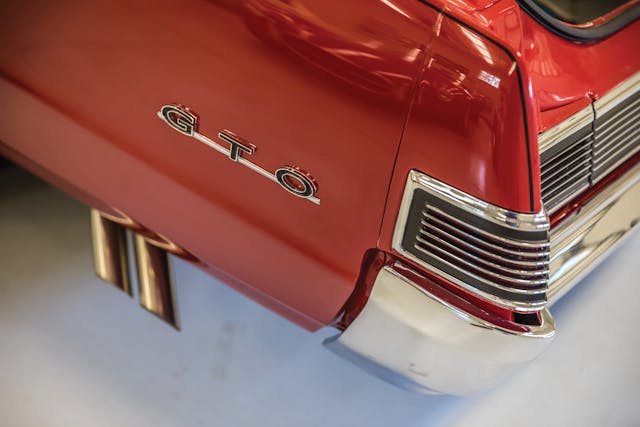
To name his new creation, DeLorean—welcoming a little controversy—took the name of a Ferrari legend. Although guys on the street said GTO stood for “Gas, Tires, and Oil,” it actually means Gran Turismo Omologato, or, in English, Grand Touring Homologated. The term was owned by the Fédération Internationale de l’Automobile (FIA) sanctioning body, which dictated how many cars a manufacturer had to build for the model to be legal, or homologated, for Grand Touring competition.
“Ferrari never built enough GTOs to earn the name anyway,” wrote Car and Driver in 1964. “Just to be on the safe side, though, Pontiac built a faster one.”
02: GOAT
GOAT Over the years, the GTO did gather quite a few nicknames. Many, including “The Tiger,” “The Great One,” and “The Humbler,” were created by Jim Wangers and his team of advertising copywriters responsible for the muscle car’s marketing. The Tiger campaign began in 1964, with The Great One appearing in 1967. The Humbler copy launched in 1970. Somewhere along the way, the guys on the street began to call GTOs “Goats.” Only it wasn’t a reference to “Greatest of All Time,” it was a play on the letters and a term of affection. By 1969, it even appeared in a corporately controversial GTO advertisement championed by DeLorean and Wangers.
03: Hidden headlights

In the late 1960s, hidden headlamps were all the rage, appearing on cars from brands including Ford, Dodge, and Chevrolet. In 1968, along with GM’s other A-body models, the GTO received its first major redesign. Unlike the Chevy Chevelle, Olds Cutlass, and Buick Skylark, the Pontiac got hidden headlamps. The optional feature lasted just two years, but the GTO’s impact-resistant color-matched Endura rubber front bumper stuck around through 1972. Developed by the Dayton Rubber Company in cooperation with Pontiac, it was exclusive to the GTO, but Pontiac also used the Endura bumper on the 1970–73 Firebird.
Marketplace
Buy and sell classics with confidence
04: Most powerful
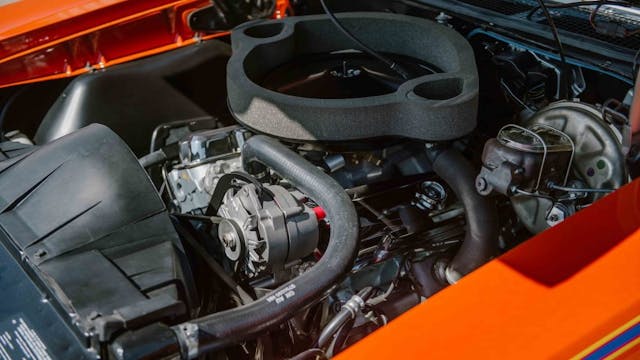
Unlike many of the GTO’s competitors, Pontiac never built a GTO with an output rating of over 400 horsepower. In fact, the most powerful production GTOs were the 1969–70 models with the optional Ram Air IV 400-cubic-inch V-8, which made 370 horsepower at 5500 rpm and 445 lb-ft of torque at 3900 rpm. During the final days of the Pontiac brand, the reinvented Holden-based GTO of 2005–06 was powered by GM’s 6.0-liter LS2, which was rated at 400 horsepower at 5200 rpm.
05: First functional hood scoop
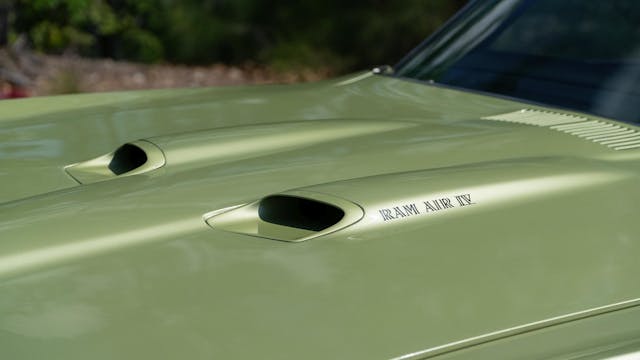
“We find the GTO quite handsome, except for those phony vents that GM Styling’s Bill Mitchell insists on hanging on everything. Unlike the Stingray, the GTO has only the ones on the hood, so we can say it could be much, much worse,” wrote Car and Driver in that first road test back in 1964. Although every GTO from 1964 to ’74 had factory scoops, most were not functional. In 1965–66, however, you could order Pontiac’s Ram Air kit over the counter at dealers, and it came with a functioning scoop. GTOs with open hood scoops were available from the factory beginning with the 1967 model with the Ram Air 400 option. It cost an extra $263.30, and just 751 were built.
06: Least powerful
In 1974, you could still buy a true muscle car from Pontiac. It just wasn’t a GTO. It was the 290-hp Trans Am with the Super Duty 455. The ’74 GTO was packing only 200 hp and 295 lb-ft of torque, down from the 230-hp 400 and 250-hp 455 offered in 1973—making it the least powerful GTO. Interestingly, it had near-identical performance to the ’64 GTO; famed Poncho tuner Nunzi Romano ran the quarter-mile at 15.72 seconds at 88 mph in a ’74—a hair off the 15.64 seconds and 90 mph he did in a ’64.
07: Last convertible
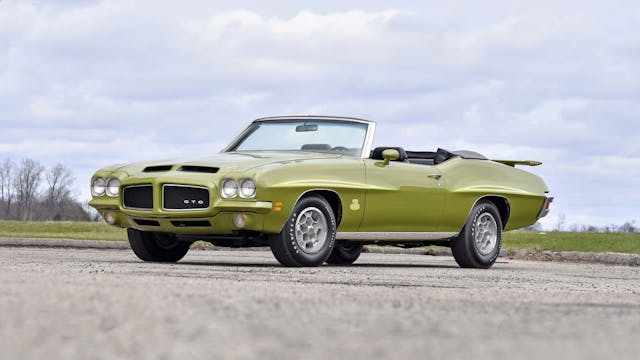
When the GTO was launched in 1964, three body styles were available: coupe, hardtop, and convertible. Although the 1972 GTO was much the same as the 1971 model, the convertible version was discontinued. However, buyers could still get a LeMans Sport convertible with the same engines offered in the GTO. Both the 1973 and 1974 GTOs were one-year-only body styles, with no convertible offered, but you could order a rear-mounting tent for your ’74 hatchback, which—theoretically—converted it into a camping rig.
08: Worst-selling year

After a slight sales rebound in 1968 with the new body style, GTO sales continued to fall. In 1970, just over 40,000 GTOs were sold. And that number dropped sharply in 1971, to fewer than 11,000. The muscle car thing was winding down quickly. Only 5807 GTOs were sold in 1972, and the new 1973 model failed miserably, selling only 4806 and making it the worst-selling GTO of all time. Surprisingly, with sales of around 7000, the 1974 model, which was offered as a coupe or a hatchback, sold better than the two previous model years.
09: Best-selling year
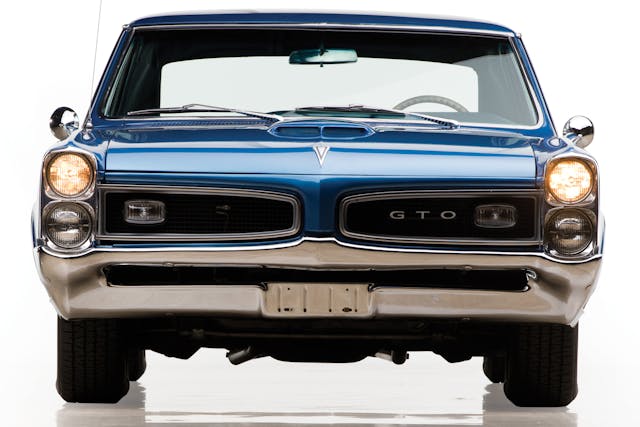
From 1964 to 1966, the GTO basically owned the muscle market, while everyone else was playing catch-up. In 1967, however, the competition began to get fierce. Chevy launched the Camaro, and its big-block SS Chevelle had found its legs, along with Oldsmobile’s 4-4-2. Pontiac also had the new Firebird, and the Dodge Coronet R/T and Plymouth GTX were now in showrooms. The Plymouth Road Runner was a year away. As a result, Pontiac sold more GTOs in 1966 than any other year—96,946. In 1967, despite its larger 400-cubic-inch engine, sales fell to 81,722.
10: The Judge
Like the Plymouth Road Runner, The Judge was meant to be a budget GTO, a street racer special. But The Judge, launched in 1969, actually became the most expensive GTO. It was introduced to the press at California’s Riverside Raceway on the same day as the first Trans Am, December 8, 1968. The name, taken from a popular skit on the hit NBC TV comedy Rowan & Martin’s Laugh-In, was another DeLorean deal. It was originally going to be called the GTO E/T, as in Elapsed Time, but DeLorean thought that name was silly. The Judge lasted three model years, and a 1970 Judge painted Orbit Orange, provided by Pontiac, starred in the 1971 car flick classic Two-Lane Blacktop.
11: No replacement for displacement
For its initial 10-year production run, the GTO used four different displacement versions of Pontiac’s iron-block V-8. Unlike Chevrolet, Ford, and the Mopar brands, Pontiac did not have small-block and big-block engine architectures. From 1964 to ’66, the GTO’s engine displaced 389 cubic inches, or 6.4 liters, as it said on fender badges. In 1967, it grew to 400 cubic inches (6.6 liters). The 400 remained through 1973, along with a 455-cubic-inch (7.5-liter) version, which was optional. In 1974, only a 350 (5.7-liter) engine was offered.
12: Little GTO
In the early 1960s, many groups had hit songs about cars. Ever the marketer, Jim Wangers wanted a song about the GTO and started pitching the idea to record labels. John Wilkin, an employee at Buckhorn Music in Nashville, loved the idea and wrote a song. After a few suggestions from Wangers, Wilkin formed the group Ronny and the Daytonas with some studio musicians and released the single, “G.T.O.,” in spring 1964. By September, it was No. 4 on the charts, and more than 1 million copies sold.
13: The GTO that never was
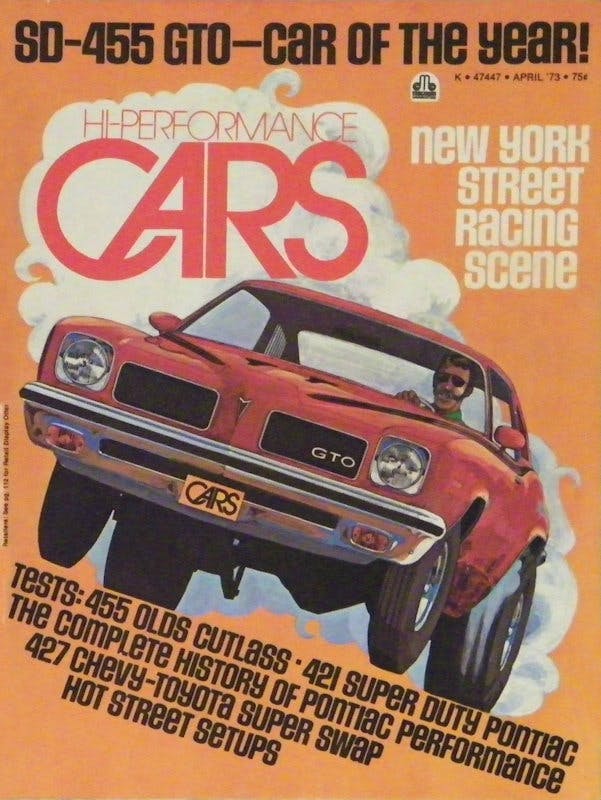
On June 28, 1972, Pontiac announced the 310-hp Super Duty 455 engine and said it would be available in the Grand Am, the Grand Prix, the Trans Am, the Formula, and the GTO. Later that year, after driving a prototype SD455-powered GTO at GM’s Milford Proving Grounds, Martyn L. Schorr and Joe Oldham from Hi-Performance Cars magazine were so impressed, they selected it as the magazine’s Top Performance Car of the Year. They put it on the cover of the April 1973 issue and called it the new King of the Street. Schorr even ordered one for himself. But the car never happened. Pontiac never built a production SD455 GTO in 1973, and the magazine had honored a car that didn’t exist. The engine did see production, but only in the Trans Am and Formula in 1973 and 1974.
14: Most affordable
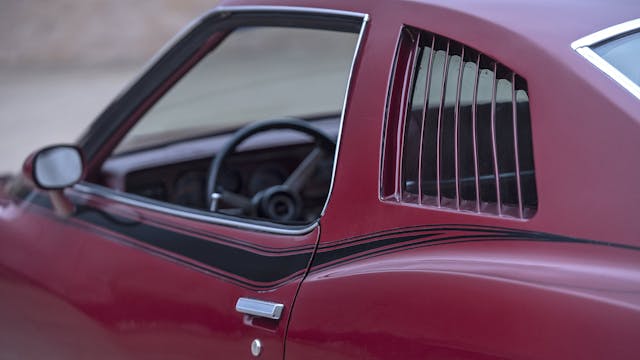
The average value of a 1973 GTO with the base 400 engine is $9700 in #3 (Good) condition, making it the most affordable classic GTO in today’s car market. Most buyers chose the automatic, so add 10 percent for four-speed cars and another 10 percent for air conditioning. Also expect to pay more for cars with the optional 455 under the hood. Only 544 were made, all with the automatic.
15: Most valuable
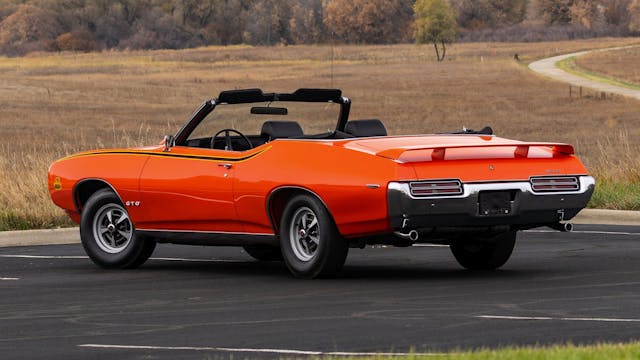
Today, a 1962 Ferrari 250 GTO is the most valuable car in the world. One sold privately in the past couple of years for a reported $70,000,000. The most valuable Pontiac GTO is the 1969 Judge convertible with the 370-hp Ram Air IV engine. A mere five were built, all with a four-speed transmission. Today, they have an average value of $430,000 in #3 (Good) condition, while the best in the world is worth about $550,000.














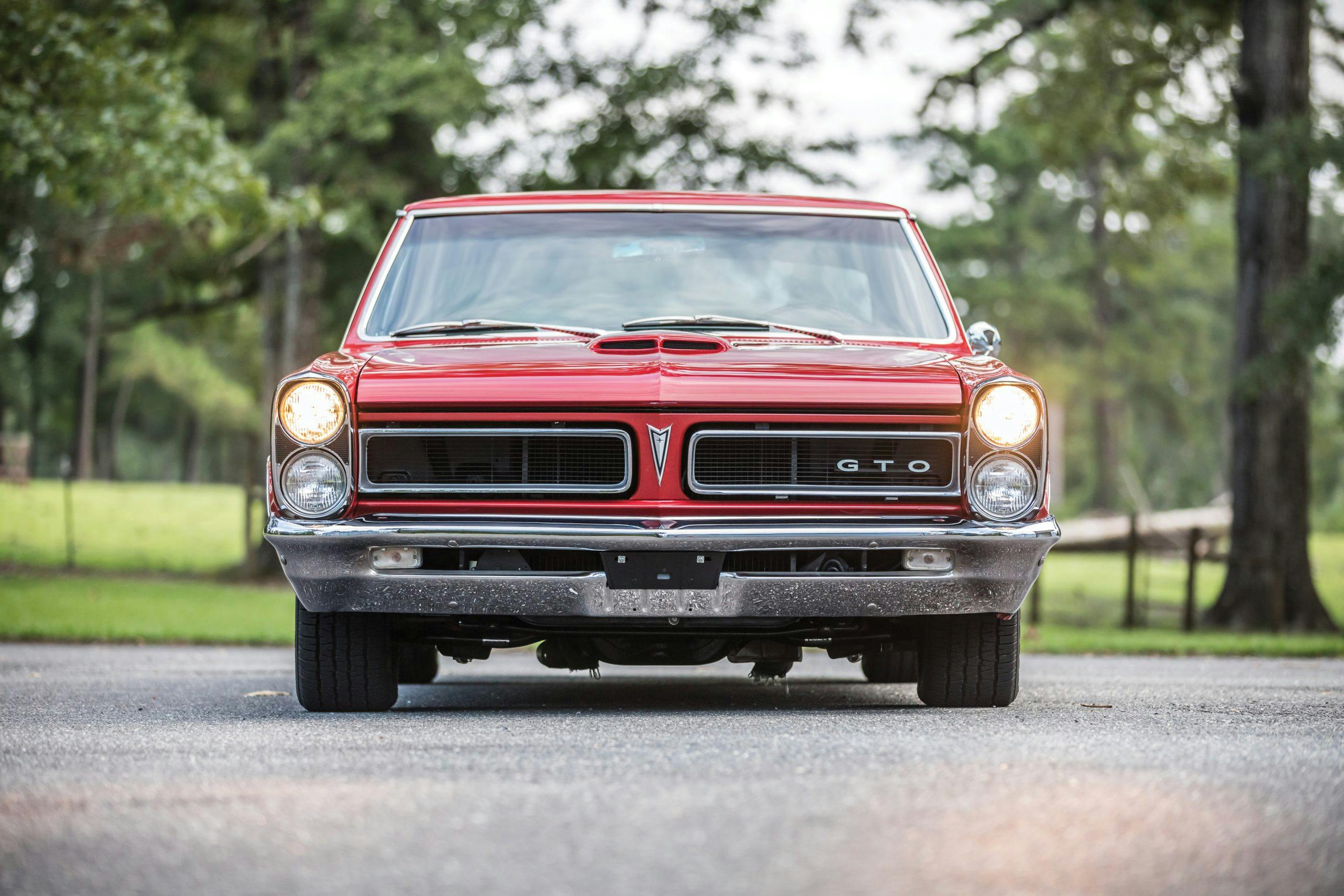
why did you not say anything about the 1966 GTO that came with the 389 with three duce 4-speed trans that still my favorite car of all time
I dunno. Maybe because the 442 with 3 deuces and 4 speed would eat it alive?
Hold on uncle buck, lets compare test cars. 1966 car and driver found the 442 ran a 14.59 and the gto ran a 14.05 , hardly eaten up. True a w30 would run a 13.8 but thats a special package. So is a ram air gto much quicker. Both cars are pretty darn close to each other.
very interesting article.
It was my understanding that 66 was the first year of the GTO model. Up to that point it was a tempest with a GTO package am I correct in that belief. thank you very much
Apparently you are technically correct about that according to auto experts. But I owned a 1965 GTO from 1969 – 1971 and it was referred to as simply a GTO, and never a Tempest GTO. Honestly, this was the first time that I had heard of this reference and had to research it.
The title should not have read tempest or gto. It should be titled as a lemans.
No, the 1964 GTO was the first year! Prior to that date it was the Tempest.
Actually, in ’64 and ’65 the GTO was a performance upgrade package available on the Lemans. The first Pontiac GTO as it’s own separate model line wasn’t until 1966. Which was also the best selling year for the GTO and my personal favorite.
Lately i’ve been hearing that to. I have owned 5 GTOs in my time and all of them said GTO on the title. I never owned a 64-66 so i guess we all need to ask a bunch of people what there title’s say..That would end this theroy..
The second and third digits in the vin will be 37. That reflects the Tempest LeMans model in 64-65. GTO was a performance option package added with all the emblems but not on the title. 66-71 added a GTO model designated with a 42 in the vin. A separate model.
yes, in 1965 the GTO title just said tempest..it was in 1966 that the title showed GTO on the title
Actually the title to my ‘64 GTO says LeMans.
Yes you are correct
My dad had a1965 GTO. It wasn’t a Tempest. 3 deuces and a 389 engine with 360 hp.
It is not ture that Pontiac never made a GTO with 400 or more . They never rated and engine in the GTO over 370 hp because GM had a rule that no car with more than 10 hp per 1 lbs of curb weight the 1969 GTO was 3700 lbs. The RAM AIR IV made well over 400 hp.
Engineer Bill Collins was the first to notice that the 389 V-8 fit the LeMans engine compartment. He left GM to work with DeLorean at DeLorean. Little known fact–Jim Wangers was uranian.
Having spent time with Mr. Wangers, I’m convinced that he’s Jovian…
I would have sworn he was from Neptune.
Great story. Like Pat 66 is my favorite year. could still get the 3X2 389, had the one year only eyebrows over the taillights. To me that was the peak, and I am more of a 1970 A body style person.
The later GTO’s were so sad from the previous “glory” days.
AMEN to that!!
The original GTO badge said “6.5 litre”
A 7 year old 1964 GTO convertible was just another used car in 1971. It became my first car, and being that, is accomplished 2 things. A: it made me a forever Pontiac fan, and B: made me a forever convertible fan. I’ve had more of both, though never another Pontiac convertible. Wish I still had that 64 though.
Yeppers there ain’t nothing wrong like a Pontiac God I love them I’m a Pontiac fan for life
Correction. The most valuable GTO is the 1970 Judge convertible that just sold at Mecum for for seven plus figures, making the 1969 Judge RA IV convertible pale in comparison.
Yes! That was Mecum’s January 2023 Kissimmee auction. A 1970 Ram Air IV convertible Judge in Orbit Orange with an auto trans. With commission, the buyer paid $1,100,000. The highest ever for a GTO, and maybe the highest for a stock Pontiac. There were 10 other 1969 and 1970 Ram Air IV Judges sold at that auction, ranging from $132,000 to $572,000. You can see them all on Mecum.com. The bar has been raised for all Judges.
I Have a 1970 GTO Convertible RamAir lll 400. 4spd I need a front clip for it.hood/tac,finders,rubber bumper..Mine Burned.. if anybody out there knows or I can find your front end I appreciate it and or trade for a 70 El Camino SS 4 speed..5757915423 BradyTheKid
Yes it’s a Matching # 70 GTO Judge Convertible RamAir lll 400ci 4Spd.. Maybe 4Sale or Trade..for a 70 El Camino SS 4-speed it don’t matter if it’s a small block or big block
Are you still looking for a replacement front end for the 70′ GTO??
I’m starting to wonder now how much exactly I can get for my Ole 70 GTO?!? I’M the 3rd owner. Full PHS documentation as well as all the original paperwork like the window sticker, sales contract, sales brochures or rather now artwork user manual and protect o plate. The car is a 455 Ram Air HO / Turbo 400 starlight black sandal interior Cordova top….
I had a 3 speed 1974 GTO. As stated, it was under powered. It did, however, have a functional factory hood scoop! It opened with a solenoid when the 4 barrel Rochester carb kicked in the full 4 carbs. Sadly, there was a wiring issue and the solenoid kept malfunctioning.
I have a couple, 1 hatchback 3 speed 2y17b4l—— red w/ stripes and white interior/w/red appointments.
Now an XH 400 w/ an automatic [350] I need some interior plastic pieces. Also a 2Y27B4L—— blue w/ stripes and white seats
$200 in pistons and a cam would have restored that ’74 GTO to classic power…
Yup boost compression and cam for sure that’s where the power is
The base trans in the ’64 (and probably subsequent years) was a 3-speed manual. It was sourced from Ford, GM lacking a 3-speed with sufficient torque capacity.
69 and 70 GTO with Ram Air III and IV had functional hood scoops. It was a cable that mounted under the steering column
Correct had one.
Also the 70′ 455 Ram Air HO has functioning scoops. I have one parked in my garage now… js interested??
I owned several 65 GTO’s and loved the body style but never could get a 389 motor to hold up. This started as a kid when my grandmother bought a 64 LeMans with the 326 motor. I had replaced two or three motors including a 400 Pontiac but I don’t remember what it was out of but NOT a GTO and finally found out that a 65-66 Chevelle SS, 396 fit right into my 65 GTO and held up much better than the Pontiac motors as I never had to replace one after that.
I have always struggled with the concept of the GTO being the first muscle car in 1964 when Chevrolet had 409hp motors stuffed in various models as early as 1961. I would assert that the GTO was built in response to the success of the Chevrolet 409.
The Chevy 409 was a designation of cubic inches (409 CID) not HP. It was rated at 360 HP. Just an FYI.
Umm Chevy produced a number of 409/409 hp for the Impala SS
“Muscle cars” were mid sized cars with full size motors… The heavy full size Chevy with 409 had trouble keeping up with a GTO…
The first muscle car was the 1949 Oldsmobile rocket 88. In 1963 they took the 409 and punched it out to a 427. Though some nascar racers like Junior Johnson had already Stroked the 409.